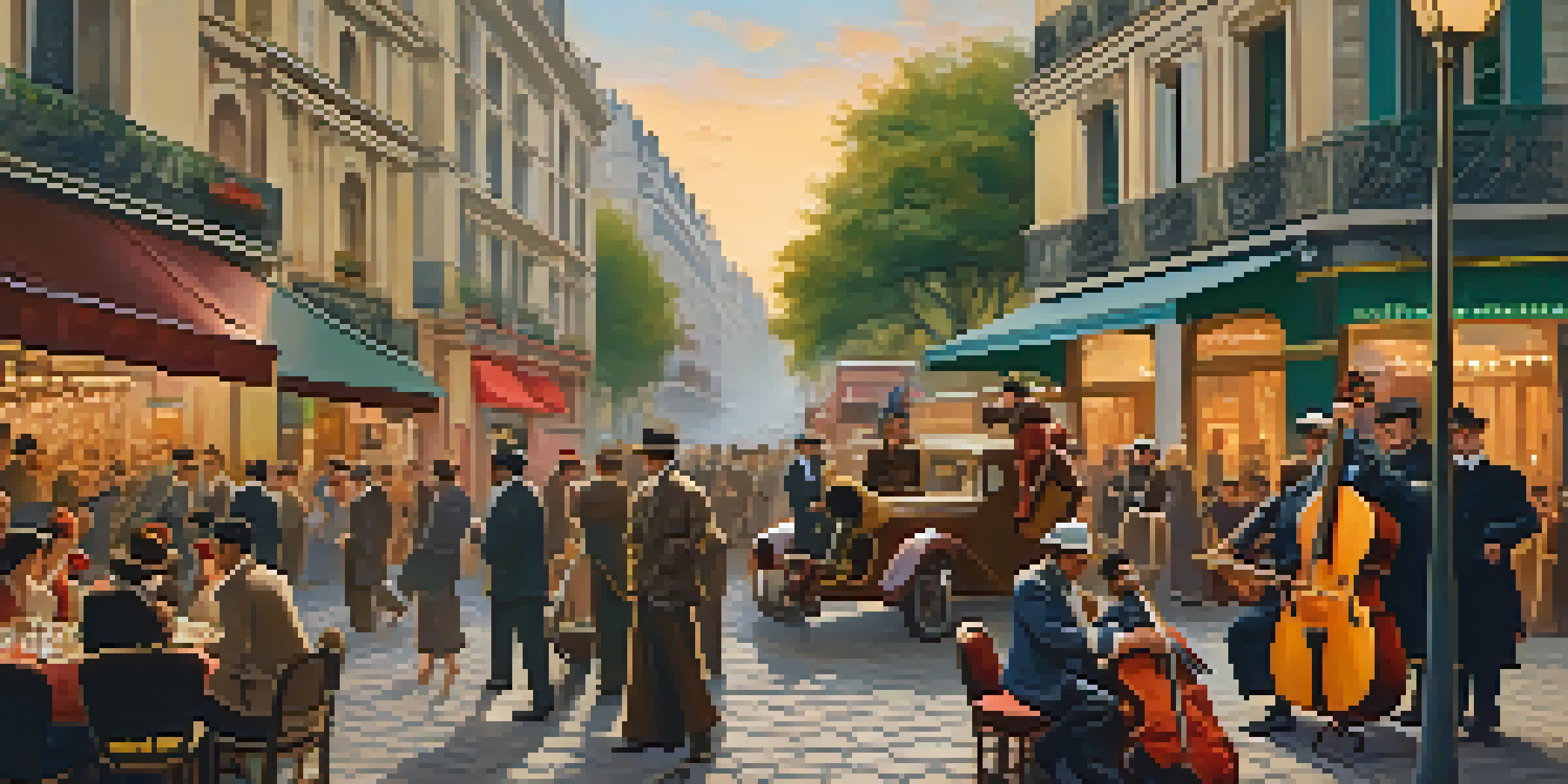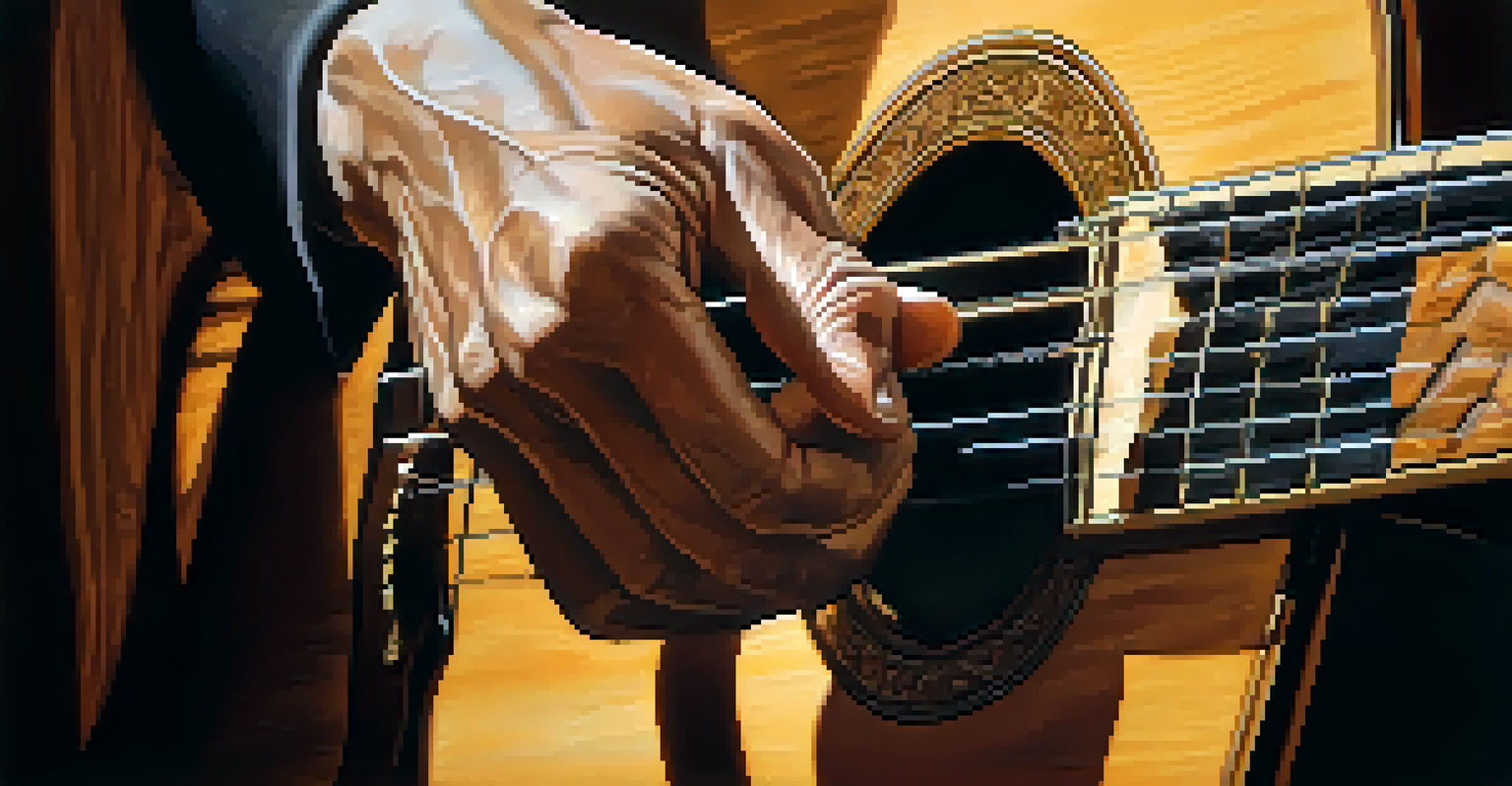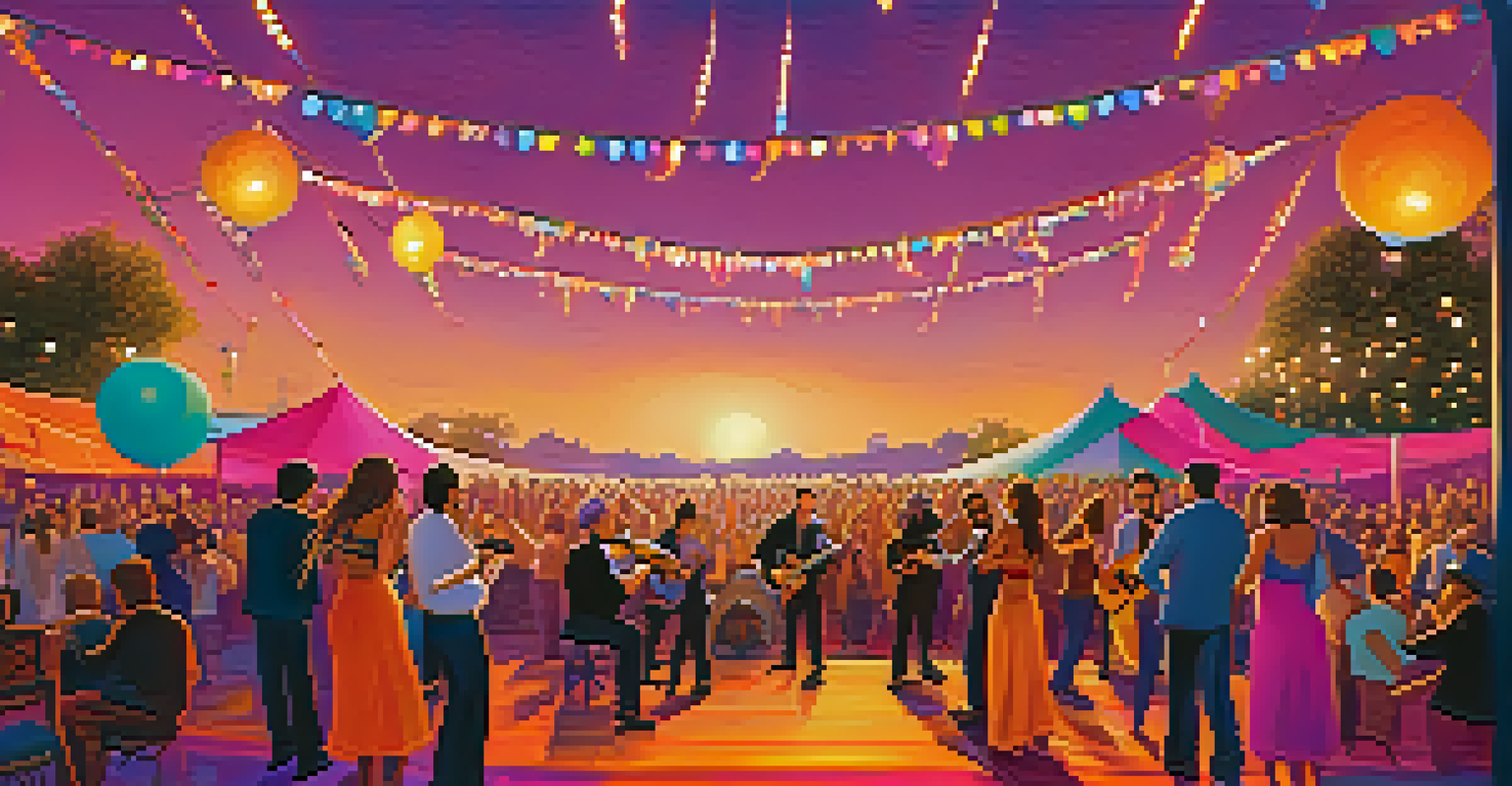Gypsy Jazz: The Cultural Fusion Behind Django Reinhardt's Style

The Origins of Gypsy Jazz and Its Influences
Gypsy Jazz, also known as Jazz Manouche, originated in the 1930s in France, blending traditional Romani music with jazz elements. This unique genre emerged from the vibrant Parisian music scene, where musicians from diverse backgrounds came together to create something entirely new. The contributions of Romani culture, particularly from the Sinti and Manouche groups, played a pivotal role in shaping this style.
Music is the shorthand of emotion.
Django Reinhardt, the genre's most iconic figure, was born into a Romani family and grew up surrounded by music. His early exposure to the rich sounds of Romani folk music laid the groundwork for his innovative guitar techniques. By incorporating elements of American jazz, such as swing rhythms and improvisation, Reinhardt created a distinctive sound that captivated audiences.
Gypsy Jazz's cultural fusion is not merely a musical blend; it represents a rich tapestry of history, identity, and artistic expression. The genre's growth reflected the social and cultural dynamics of the time, making it a fascinating study of how music can transcend boundaries and unite different communities.
Django Reinhardt: A Revolutionary Musician
Django Reinhardt's life story is as compelling as his music. Born in Belgium in 1910, he faced numerous challenges, including a tragic fire that severely injured his hand. Despite this setback, he developed a unique finger-picking style that allowed him to play with incredible speed and precision, making him a trailblazer in the world of guitar.

Reinhardt's innovative approach to guitar playing was revolutionary in how it combined jazz improvisation with the traditional melodies of Romani music. His ability to evoke deep emotion through his performances set him apart from his contemporaries. He not only popularized Gypsy Jazz but also influenced countless musicians across genres.
Gypsy Jazz Blends Cultures and Sounds
Emerging in 1930s France, Gypsy Jazz fuses traditional Romani music with jazz, creating a vibrant and dynamic genre.
Through his travels and collaborations with other musicians, Django helped spread the genre beyond France, leaving an indelible mark on the global music landscape. His legacy continues to inspire new generations of musicians, ensuring that the spirit of Gypsy Jazz remains vibrant and alive.
Key Characteristics of Gypsy Jazz Music
Gypsy Jazz is characterized by its upbeat tempos, intricate melodies, and improvisational flair. The music often features a driving rhythm provided by rhythm guitarists, while soloists take turns showcasing their virtuosity. This creates a lively, dynamic atmosphere that invites listeners to engage and dance.
The beautiful thing about learning is that no one can take it away from you.
One defining feature of Gypsy Jazz is the use of the 'la pompe' rhythm, which gives the music its distinctive swing feel. This rhythmic pattern, often played on the guitar, mimics the sound of traditional Romani dance music, creating a seamless blend of cultures. Additionally, instruments like the violin and accordion are commonly used, adding to the genre's unique texture.
Improvisation plays a crucial role in Gypsy Jazz, allowing musicians to express their individuality while staying rooted in the genre's traditions. This emphasis on creativity and spontaneity reflects the broader cultural values of the Romani people, making each performance a celebration of life and artistry.
Cultural Significance of Gypsy Jazz
Gypsy Jazz is more than just a musical genre; it serves as a cultural bridge between different communities and traditions. The fusion of Romani and jazz influences reflects a broader history of cultural exchange in Europe, particularly in the early 20th century. This blend has fostered a unique identity that resonates with diverse audiences.
The music's infectious energy and emotional depth have made it a beloved genre, transcending geographical and cultural barriers. Events like the Django Reinhardt Festival in France celebrate this cultural heritage, bringing together musicians and fans to honor the genre's roots. Such gatherings highlight the importance of community and connection in the world of music.
Django Reinhardt's Lasting Impact
Django Reinhardt revolutionized guitar playing within Gypsy Jazz, influencing countless musicians and expanding the genre's reach worldwide.
Moreover, Gypsy Jazz has opened doors for Romani musicians, allowing them to gain recognition and share their stories through music. By embracing their heritage, these artists contribute to a richer understanding of the Romani culture and its significance in the broader tapestry of music history.
Modern Interpretations of Gypsy Jazz
In recent years, Gypsy Jazz has seen a resurgence in popularity, with contemporary musicians putting their spin on the genre. Artists like Stochelo Rosenberg and Bireli Lagrene have embraced Reinhardt's legacy while introducing new elements that appeal to modern audiences. This evolution keeps the genre fresh and relevant.
Many musicians blend Gypsy Jazz with other genres, such as blues, rock, and even electronic music, creating exciting new sounds. This fusion not only attracts a younger audience but also showcases the versatility of Gypsy Jazz as a living, breathing art form. It demonstrates how traditions can be honored while still allowing for innovation.
Music festivals around the world now feature Gypsy Jazz artists, drawing in diverse crowds eager to experience this vibrant genre. Such events serve as a testament to the enduring appeal of Gypsy Jazz and its ability to adapt over time, ensuring that the spirit of Django Reinhardt continues to inspire and connect people.
The Role of Gypsy Jazz in Global Music Culture
Gypsy Jazz has carved out a significant place in the global music landscape, influencing musicians across various genres. Its unique blend of rhythms and melodies has inspired artists in everything from folk to rock, showcasing the genre's versatility and appeal. This cross-pollination of styles highlights the interconnectedness of different musical traditions.
The genre's impact can be seen in the works of mainstream artists who incorporate Gypsy Jazz elements into their music, helping to introduce it to wider audiences. This cultural exchange enriches the global music scene, as musicians draw from diverse influences to create innovative and exciting sounds.
Modern Gypsy Jazz Evolves and Thrives
Contemporary artists are revitalizing Gypsy Jazz by incorporating diverse musical styles, ensuring its relevance and appeal to new audiences.
As Gypsy Jazz continues to evolve, its role in fostering collaboration and understanding between different cultures remains crucial. The genre stands as a powerful example of how music can transcend boundaries, bringing people together through shared rhythms, melodies, and stories.
Learning to Play Gypsy Jazz: Tips for Beginners
If you're inspired by the sounds of Gypsy Jazz and want to learn how to play, there are a few key tips to keep in mind. First, familiarize yourself with the 'la pompe' rhythm, as it's fundamental to capturing the genre's essence. Practicing this rhythm on the guitar will give your playing that signature swing feel.
Listening to classic tracks from Django Reinhardt and other Gypsy Jazz musicians can provide valuable insights into phrasing and improvisation. Pay attention to how they construct their solos and interact with other instruments. This will help you develop your own style while respecting the genre's traditions.

Finally, don’t hesitate to join a community of fellow musicians. Whether through local jam sessions or online forums, connecting with others who share your passion for Gypsy Jazz can enhance your learning experience and inspire your musical journey.